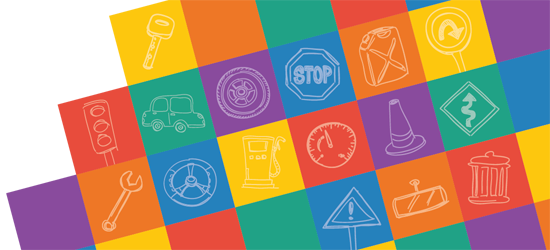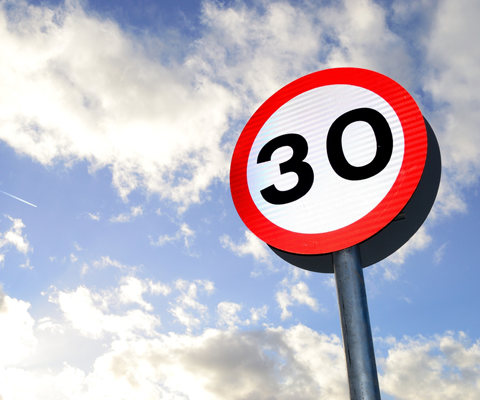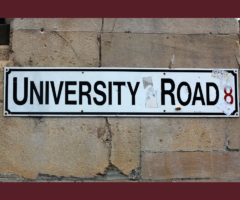
Understanding road markings
I know it doesn't feel like it much of the time, but the people in charge of the roads are trying to make it easy for you to know what’s going on. One of their gifts to us is road markings.
Road markings tell you what the rules are - and as a general rule, the more paint they've used, the more important their message is.
-
Along the middle of the road
-
Along the side of the road
-
Across the road
Short broken white lines
These tell you where the middle of the road is. Here in the UK, we drive on the left of that line unless we’re overtaking or avoiding a hazard.
Longer broken white lines
These show where the middle of the road is, but also let you know that there’s a hazard coming up. Only overtake if it’s really necessary.
2 solid white lines
These tell you where the middle of the road is, but also tell you that you MUST NOT CROSS (think Gandalf). You should cross them only if you’re turning right or you need to pass a stationary vehicle, and always use lots of observation.
Sometimes, red tarmac is used within a block of white lines or diagonals. This is there to show you the area that’s separating traffic moving in opposite directions.
An unbroken white line
This is there to tell you where the edge of the carriageway is. Stay between that the line and the one telling you where the middle of the road is.
Yellow lines
These show waiting and parking restrictions. Don’t park on double yellow lines. Not to pop in and get a drink, not to drop off your mate. Just don’t. Everyone will hate you and you're likely to get a fine.
Zig-zag lines
These mean no stopping or parking. You’ll mostly find them coming up to traffic lights or outside schools. If you're in a line of traffic, don't stop on these - leave them clear until traffic ahead has moved forward.
Broken lines across your path
These mean that you should give way because someone else has right of way. You’ll often find them at roundabouts, so you give way to the traffic coming from your right.
Hatchings
These show an area where you can't stop. If you've got a green but your path is blocked by cars up ahead, WAIT rather than stop on hatchings. This is a major fault: a driving test fail.
A single, solid white line
This means stop. Come to a full stop, even if you can see that your way is clear. You will fail your driving test if your car doesn't come to a complete stop - it's a major fault.
Rumble strips
These are the bumpy lines on the tarmac that make it sound like your car is a plane coming in to land. They indicate that you’re approaching a hazard and you should be cautious.
Road markings are there to give you the information that you need to drive safely on that particular road. Listen to the road.












